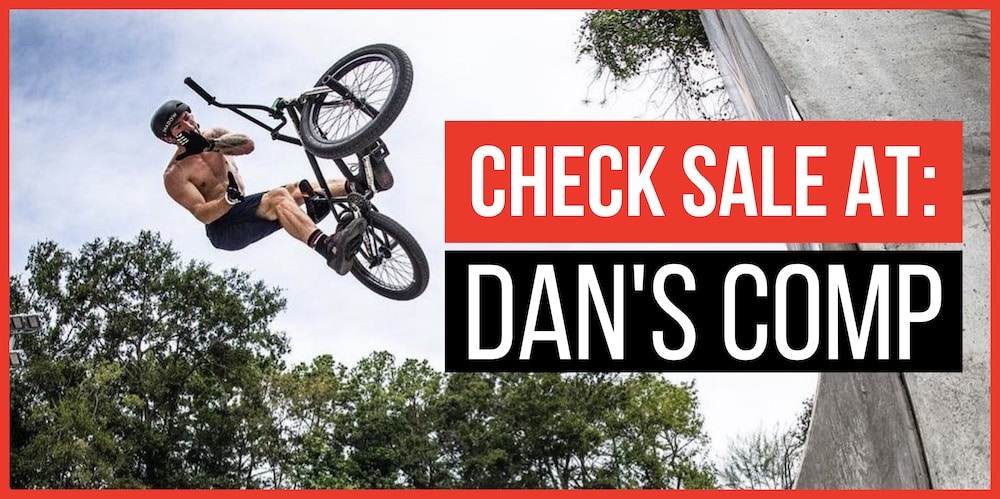Are you interested in learning how to start BMX riding?
That’s epic – I’m so STOKED for you.
Welcome to my most complete beginner’s guide that will help you get your sessions done the right way.
BMX, which stands for Bicycle Motocross, began in Southern California in the late 1960s.
Think of it as motocross but with bicycles instead of motorbikes. FUN!
Kids started racing their bikes on dirt tracks, imitating their motocross heroes, and from there, the sport just exploded in popularity.
It was all about the thrill of the race and the freedom of riding and performing tricks.
Today, BMX isn’t just about racing; it has evolved into various styles, including street, dirt, flatland and park riding, each with its own unique flair and set of skills.
What I really like about BMX is its ever-growing popularity. It’s not just a sport; it’s a LIFESTYLE.
Let’s dive in and discover the world of BMX together!
- Understanding BMX riding
- Choosing the right BMX bike
- Essential gear & safety equipment
- Basic BMX riding skills
- Finding places to ride
- Maintenance & upkeep of your BMX bike
- Advancing your BMX skills
- Conclusion: Master BMX riding
BMX Beginner’s Guide: Quick Tips
| Section | Key takeaways |
| Understanding BMX | Overview of BMX styles: Racing, Street, Park, Dirt, Flatland. Each style has unique challenges & techniques |
| Choose the right bike | Focus on bike size (top tube length), material (Chromoly for durability), & type (racing vs freestyle). Recommended beginner brands include Kink, Subrosa, WTP |
| Essential gear & safety | Must-haves include helmets, pads, gloves, & BMX-specific shoes. Safety is crucial to enjoying the sport |
| Basic riding skills | Focus on balance, turning & jumping. Consistent practice is key to improvement |
| Finding places to ride | Start with BMX parks & tracks or explore street spots. Connect with local riders to find the best locations |
| Maintenance tips | Regular cleaning, checking bolts & chain lubrication help maintain performance. For complex issues, seek professional help |
Understanding BMX Riding
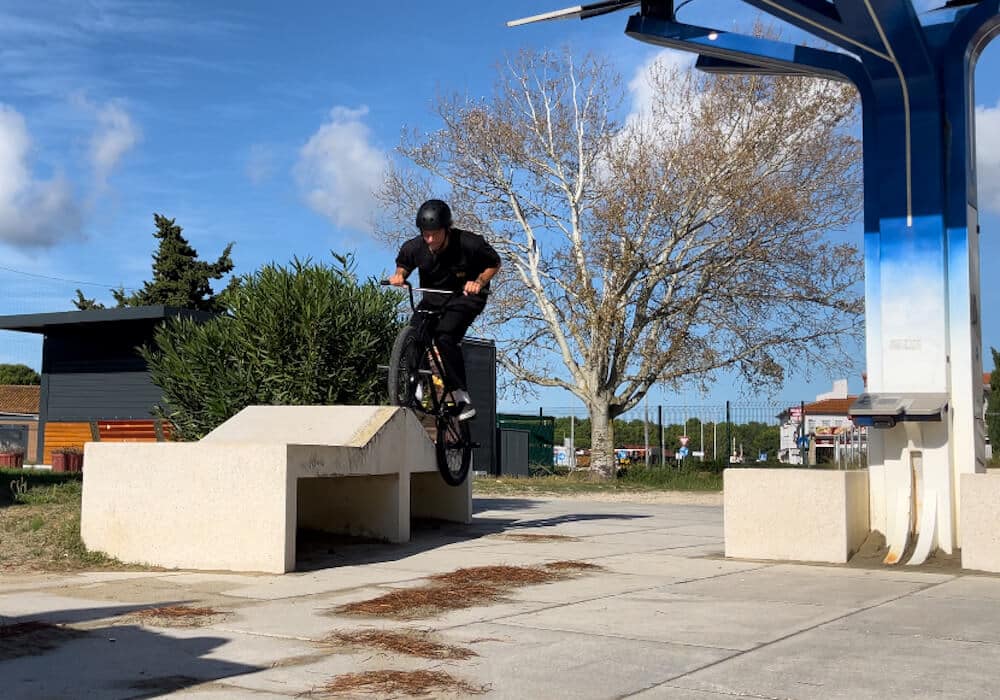
BMX riding is an incredible sport that’s all about agility and creativity (speed, too!).
It’s like a blend of athleticism and art, all rolled into one epic experience.
Different BMX Riding Styles
There are different types of BMX riding, each with its own unique style and challenges:
- BMX racing: This is where it all began. It’s all about speed and agility as riders race around a dirt track filled with jumps and turns. It’s thrilling, competitive, and a real adrenaline rush.
- Street BMX: This style is all about using the urban landscape as your playground. Riders grind on rails, jump off steps, and use street furniture to pull off impressive tricks.
- Park BMX: Riders perform tricks and stunts in a skate park with ramps, bowls, and half-pipes. It’s about flow, style, and using the park’s objects to create an awesome routine.
- Dirt BMX: Or, as some call it, trails, riders navigate through dirt tracks filled with jumps, bumps, and berms. It was the first extension of BMX racing, where riders showcase their skills in the air.
- Flatland BMX: It’s a freestyle BMX discipline where riders perform intricate tricks and spins on flat, smooth surfaces without ramps or jumps. It’s akin to breakdance, requiring a high level of balance and control.
BMX Terminology
As you get into the sport, you’ll start hearing some cool BMX terminology. (Check the link for over 150 terms and definitions.)
Words like “bunny hop” (jumping both wheels off the ground), “manual” (riding on the rear wheel without pedaling), and “grind” (sliding along a rail or edge) will become part of your vocabulary.
Don’t worry if it sounds like a whole new language now – you’ll get the hang of it in NO TIME.
Choosing The Right BMX Bike
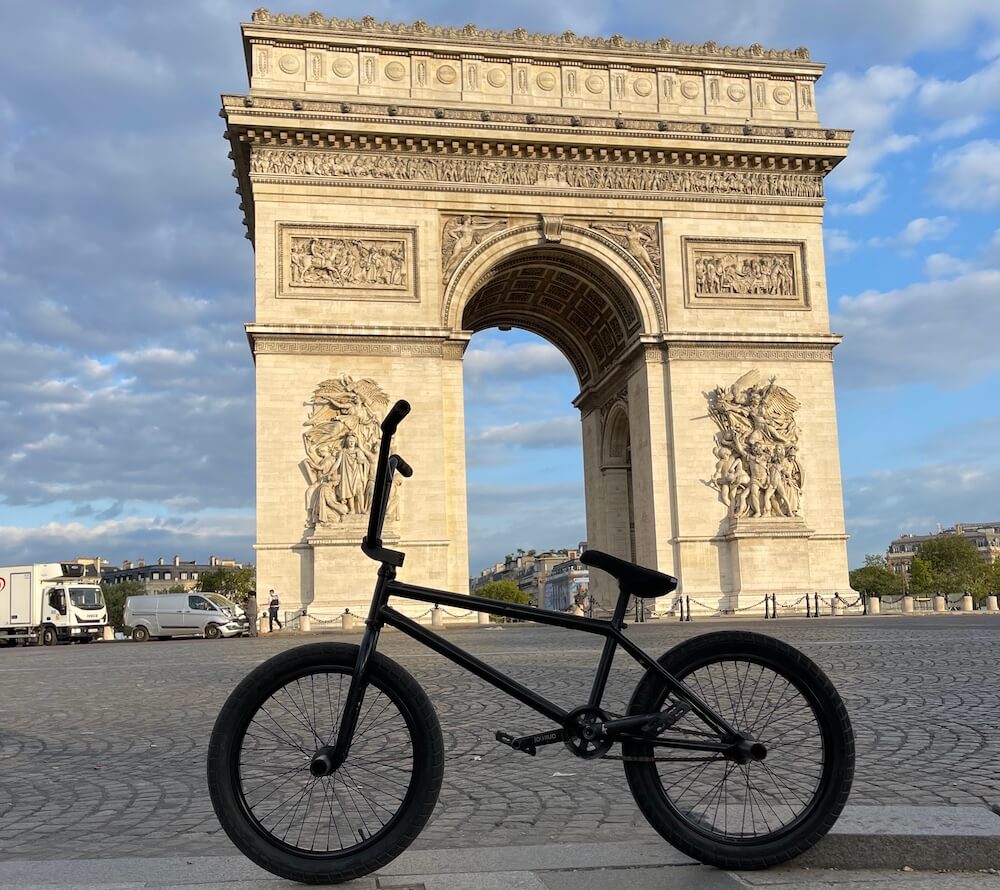
So, you’re ready to choose your first BMX bike?
This is an exciting step, and I’m here to help ensure you find the perfect ride for your BMX sessions.
Factors To Consider When Selecting A BMX Bike
First things first, let’s talk about what to look for in a BMX bike.
The size of the bike is super important.
You want a bike that fits you just right – not too big, not too small.
Generally, the size is determined by the length of the top tube.
If you’re a bit shorter, go for a shorter top tube, and vice versa. It’s all about comfort and control.
Note: Check out my complete guide to BMX bike size chart.
Recommendations For Beginner-Friendly BMX Bikes
Next, the material of the bike. Most BMX bikes are made from either Chromoly or tensile steel.
Chromoly is sturdy and durable, great for those just starting out and needing a bike that can take a few knocks.
Tensile steel is cheaper, which makes it more affordable.
However, if you’re serious about riding BMX, opt for Chromoly!
Note: These are the best cheap BMX bikes I could find.
What Type Of Bike To Get?
If you’re into racing, you’ll want a lighter bike with a larger sprocket to help you zoom around the track.
For freestyle, look for a sturdier frame and smaller sprocket, which is better for tricks and jumps.
And if you’re not sure yet, that’s okay! There are plenty of all-around options that are great for beginners.
Finally, look for a bike with a good balance of quality and price – you don’t need the fanciest bike to start, but you do want something that will last.
Brands like Kink, Subrosa, and WeThePeople have great entry-level models that won’t break the bank.
Tips On Where To Buy
As for where to buy your BMX bike, local bike shops are a fantastic place to start.
They often have knowledgeable staff who can help you find the right fit and answer any questions. Plus, you get to SUPPORT local businesses!
Online can be a good option, too, but you can’t try the bike like you can in a local bike shop.
It’s better to be sure what you’re buying.
Tip: You can hit the local shop, find out what suits you and then order online. You can find plenty of amazing deals on Dan’s Comp.
Essential Gear & Safety Equipment
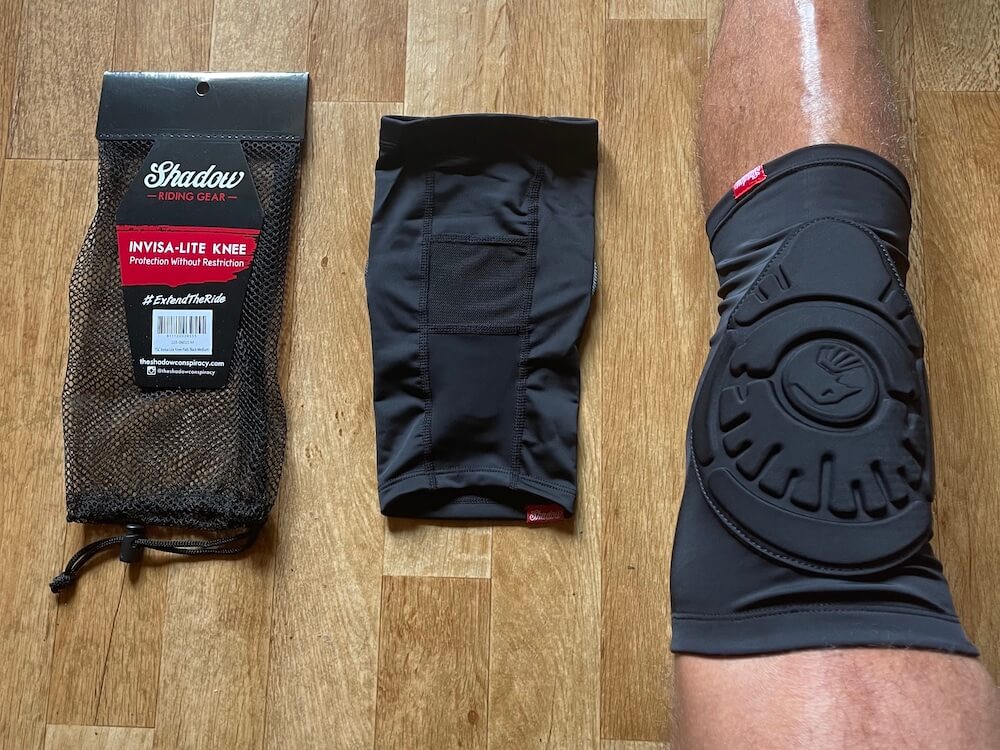
Safety gear is the key to keeping the fun rolling without any unnecessary bumps or bruises.
List Of Necessary Safety Gear
First up on our must-have list is the BMX helmet. Make sure it fits snugly but comfortably.
Then, we’ve got pads – knee pads, elbow pads, and shin guards. I also recommend ankle braces (getting hit in the ankle bone is the worst!)
They’re your armor against scrapes and knocks.
Gloves are also a big deal. They’ll protect your hands and give you a better grip on those handlebars, especially when you’re pulling off cool tricks.
Out of all the gear, I think gloves are the least important for a beginner.
Importance Of Proper Safety Gear & Choosing The Right Fit
BMX can be rough and tumble, and we want to keep you riding happy and healthy.
Your gear acts as a protective barrier, so if you take a tumble (which happens to the best of us), you’re way less likely to get hurt.
When choosing your gear, make sure everything fits just right.
Helmets should be snug but not too tight, and pads should cover the areas they’re meant to without slipping.
Additional Accessories For Beginners
For beginners, there are a couple of additional accessories I’d recommend.
First, a good pair of BMX-specific shoes. They’ll give you better control and help you stick those pedals for smoother landings.
Also, consider a backpack where you can store all your gear, a water bottle, a wax block and essential BMX tools.
Remember, your safety gear is your best buddy on the track, park, or streets.
It’s all about having a BLAST safely and confidently.
Basic BMX Riding Skills
Ready to start mastering some basic BMX riding skills?
I’m here to guide you through the basics. Let’s get rolling!
Fundamental Beginner BMX skills
First, every BMX rider, regardless of their level, needs to nail down a few fundamental skills.
We’re talking about balancing, turning, and jumping – the ABCs of BMX.
- Balancing: This is where it all begins. Start by just getting comfortable on your bike. Ride around leisurely, feeling the weight and how it moves with you. Practice standing up on the pedals and coasting. It might feel wobbly at first, but keep at it!
- Turning: Once your balance is down, it’s time to turn things up a notch with turning. Start with wide, gentle turns. As you get more confident, make them tighter and faster. Remember, it’s all about leaning into the turn and looking in the direction you want to go. Your bike will follow your eyes!
- Jumping: Ready to catch some air? Start small – find a gentle slope and practice lifting your front wheel, then your back wheel, as you go over the rise. It’s all about timing and a little bit of courage. As you get more comfortable, try bigger jumps. But always remember, safety first!
Practice & Consistency
If you want to progress in BMX, consistency is key. The more you ride, the better.
However, that doesn’t mean you must ride every day, but multiple times weekly is a must.
And then, once you get fully comfortable with your bike and the above fundamental skills, you can begin learning tricks.
Note: I compiled a complete list of beginner BMX tricks that are a foundation for taking things to the next level.
Remember, every pro BMX rider was once a beginner, just like you.
It takes time, patience, and a lot of practice. But most importantly, it’s about having a blast on your bike.
Finding Places To Ride
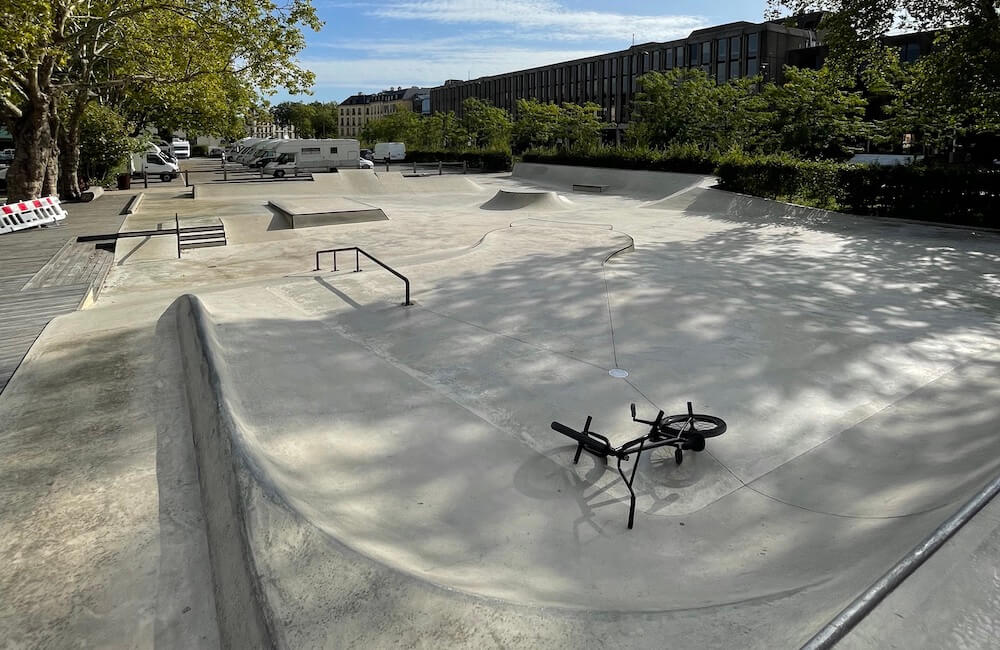
Finding the perfect place to ride your BMX can be almost as fun as the riding itself! So, let’s talk about how you can scout out some awesome locations for your BMX adventures.
Finding Suitable Locations For BMX Riding
First, BMX parks and (pump) tracks are fantastic places to start.
These are specially designed for riders like you, with fun features like jumps, ramps, rails, ledges, and berms.
A quick Google search or visiting your local bike shop can help you find the nearest BMX park or track.
Plus, these places are great for meeting other riders who share your passion.
But hey, the world is your playground, right? Urban areas can be a treasure trove for BMX riders.
Look for spots with smooth pavements, stair sets, handrails, and ledges – perfect for honing your street riding skills.
Connect With Local BMXers
Now, connecting with local BMX crews and riders.
Not only will you find out about the best local spots, but you’ll also make some new friends who can share tips and tricks.
Ideally, just hit your local skatepark and introduce yourself to the riders, and go from there.
Tips For Respectful & Safe Riding In Public Spaces
Here are a few tips for respectful and safe riding in public spaces:
- Always wear your safety gear. A helmet is a must, and pads are a great idea, too.
- Respect the space. This means not riding on private property without permission and being mindful of pedestrians and others using public spaces.
- Leave the place better than you found it. Don’t litter, and if you see some trash around, why not do a good deed and pick it up?
Note: I also recommend learning about the BMX skatepark etiquette tips.
Maintenance & Upkeep Of Your BMX Bike
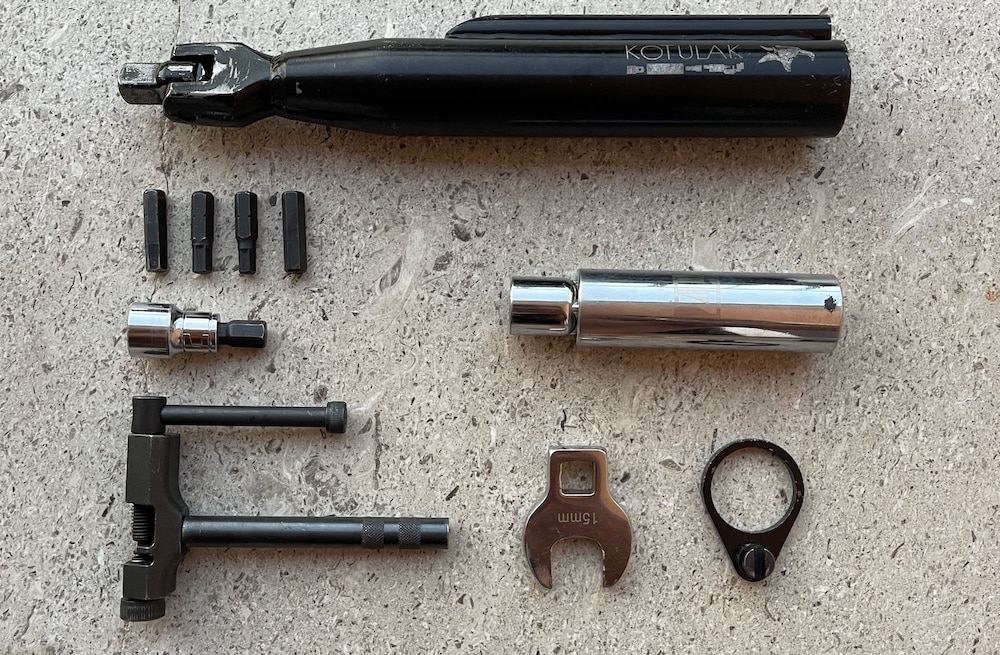
Keeping your trusty steed – I mean, your BMX bike – in tip-top shape is super important.
Not only does it make your rides smoother and safer, but it also helps your bike last longer.
Basic Maintenance Tips
Clean Your Bike
First things first, regular cleaning is key. A clean bike isn’t just about looking good; it’s about performance, too.
Dirt and grime can cause wear and tear, so gently wash your bike regularly. Use a soft brush and mild soap, and don’t forget to dry it off afterward. But wiping it with a dry cloth (what I do) will also do the trick.
Tighten Bolts
Next up, let’s talk about keeping things tight.
Over time, nuts and bolts can loosen, which you don’t want happening mid-ride.
Periodically check and tighten them, especially the stem, crank and wheel bolts.
Chain Maintenance
Now, onto the chain – the heart of your bike’s movement.
Keep it well-lubricated (you don’t have to use much) and clean. This helps reduce friction and wear, making pedaling smoother and extending the life of your chain and sprocket.
Note: If you want to become an at-home bike mechanic, my BMX bike maintenance guide will do the trick.
Common Issues
As a beginner, there are a few common issues you might face.
Squeaky brakes? It’s likely they need cleaning or adjusting.
Difficulty in pedaling? Check your chain, sprocket (it might be twisted), and rear cog – they might need lubrication or a bit of adjustment.
Flat tires are another common issue. Learning to patch up or replace a tube is a handy skill every BMX rider should have.
Also, using double wall rims instead of single ones helps prevent flats, too.
When To Seek Professional Help
But hey, sometimes, things get a bit tricky, and that’s okay.
If you’re facing an issue beyond your comfort zone – like problems with your bike’s bearings, adjusting brakes, or wheel truing – it’s time to call in the pros.
Your local bike shop can help ensure your bike is safe and ride-ready.
Remember, a little bit of regular maintenance goes a long way. It keeps your rides smooth and saves you money in the long run.
Plus, there’s something really satisfying about taking care of your own ride – at least for me!
Advancing Your BMX Skills
Progression is key.
Start by building on the skills you’ve already mastered. If you’re comfortable with basic jumps, try adding a trick to the mix.
If turning is your thing, make those turns sharper and faster. It’s all about gradually stepping up the complexity of your maneuvers. (It’s a nice progress to your first 180!)
Now, in the internet age, tons of resources are at your fingertips. YouTube is a goldmine for BMX how-tos.
I also run a YouTube channel where you can find plenty of how-tos, from beginner to more advanced tricks.
But plenty of other channels also have excellent step-by-step guides for various tricks and techniques.
Pro tip: Watch videos from different riders to get various perspectives and tips.
Still, there’s nothing like learning in person. Check out if there are any BMX classes or local workshops in your area.
Learning from an experienced instructor can really boost your skills, and you’ll also have the chance to meet other BMX riders.
Here’s a crucial piece of advice: Be patient and practice consistently.
Advancing in BMX doesn’t happen overnight. It’s about putting in the time and effort.
Celebrate the small victories, like landing a new trick for the first time, and don’t get discouraged by the falls (they’re just part of the process).
Conclusion: Master Your BMX Riding
You’ve made it through the guide, and now you’re all geared up with knowledge and ready to start your BMX journey.
Let’s quickly recap the key points:
- Understanding BMX: You’ve learned what BMX is all about, from the adrenaline of racing to the creativity of freestyle.
- Choosing the right BMX bike: You know how to pick a bike that’s just right for you – considering size, material, and style.
- Safety first: You understand the importance of wearing the right equipment.
- Mastering the basics: You’re ready to practice fundamental skills like balancing, turning, and jumping.
- Finding your spot: You’ve got the scoop on where to find the best places to ride and meet fellow BMX enthusiasts.
- Keeping your bike happy: You know how to maintain your bike to keep it in great shape.
- Skill-up: With patience and practice, you’re prepared to take your skills to the next level.
Remember, every BMX rider started exactly where you are now.
It’s all about taking that first pedal stroke with excitement and a bit of courage.
Don’t worry about being perfect from the start; BMX is a journey filled with learning, fun, and community.
BMX is not just a sport; it’s a way to express yourself, challenge yourself, and make some amazing memories.
Further reading:
- Common Beginner BMX Mistakes
- How To Store A BMX Bike?
- Common Skatepark Elements & Objects
- BMX Riding Safety Tips
- Amazing Health Benefits Of BMX



